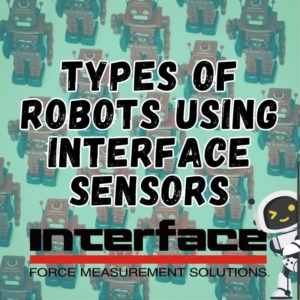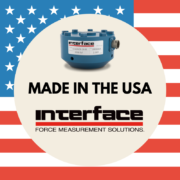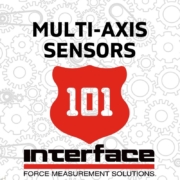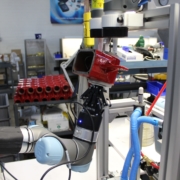Types of Robots Using Interface Sensors
 Robots are increasingly being used in a wide range of applications, from manufacturing and healthcare to entertainment and defense. As robots become more sophisticated, the need for accurate and reliable force measurement becomes even more critical.
Robots are increasingly being used in a wide range of applications, from manufacturing and healthcare to entertainment and defense. As robots become more sophisticated, the need for accurate and reliable force measurement becomes even more critical.
Interface load cells and torque transducers are commonly used in the design and testing of new robots. Our sensor technologies are used to measure and monitor forces and loads experienced by various robot components. Load cells are used to measure the forces exerted by robotic arms and grippers, while torque transducers are used to measure the torque generated by motors. Multi-axis load cells are growing in use with robotic engineers throughout the R&D phases for more measurement data to make smarter decisions in design and use of the robot.
The use of Interface load cells and torque transducers in robotics offers several benefits. First, they can help to improve safety by detecting excessive forces or overloads. Second, they can help to optimize performance by providing feedback about the forces being applied by the robot. Third, they can enable more sophisticated control of robotic systems by providing real-time data about the forces and torques being generated. Our miniature load cells are commonly used by robotic OEMs to provide control and feedback during use.
Types of Robotics Using Sensor Technologies
Autonomous robots are engineered to operate independently without human intervention. They are often used in applications such as space exploration, agriculture, and transportation. Cobots work in collaboration with humans, enhancing skills, providing safety, or replacing tedious tasks to increase productivity. Read more in our Advancements in Robotics and Cobots Using Interface Sensors case study. The following highlights robot types that utilize Interface measurement solutions.
Industrial Robots: These robots are used in manufacturing and assembly processes to automate tasks that are repetitive, dangerous or require precision. They are used in a variety of industries such as automotive and aerospace. Robotic arms are frequently used in industrial automation. Check out our Industrial Robotic Arm App Note.
Medical Robots: These robots are used in healthcare applications, such as surgical procedures, diagnosis, and rehabilitation. They are often designed to be highly precise and can perform tasks that are difficult for human surgeons to perform. Learn more: Robotic Surgery Force Feedback
Military and Defense Robots: These highly skilled robots are used in military applications, such as bomb disposal, reconnaissance, and search and rescue missions. They are often designed to operate in dangerous environments where it is not safe for humans.
Educational Robots: These robots are used to teach students about robotics, programming, and technology. They are often designed to be easy to use and intuitive, allowing students to experiment and learn through hands-on experience.
Entertainment Robots: These robots including animatronic robots are designed for amusement purposes, such as robotic toys or theme park attractions. They interactive and engaging, incorporating features like voice and facial recognition. Read about this type of use case here: Animatronics
Consumer Product and Service Robots: These robots are designed to interact with humans and perform tasks such as assisting in healthcare, cleaning, or entertainment.
Why Interface Supplies Robotic Manufacturers with Load Cells
Measurement solutions, including load cells, play a vital role in the design, testing, and operation of robots by providing valuable information about forces, loads, and weights. They contribute to enhancing safety, optimizing performance, and enabling more sophisticated control of robotic systems.
Load cells are used to measure the forces exerted by robotic arms and grippers. By integrating load cells at key points in the robot’s structure, engineers can monitor the forces and torques experienced during operation. This helps in optimizing the robot’s performance, ensuring it operates within safe limits, and improving its control algorithms.
To determine the weight of the robot itself or the payload it carries, sensors are vital. The measurement data is crucial for stability analysis, power calculations, and designing the mechanical structure of the robot to ensure it can handle the intended loads. This is extremely important when utilizing robots in industrial applications for lifting and weighing.
Utilizing robots in production lines requires integrated sensors into robots to protect everyone and the equipment. Integrating load cells into robotic safety systems helps to detect excessive forces or overloads. If a load cell detects a force beyond the specified limit, it can trigger emergency shutdown procedures to prevent damage to the robot or injury to nearby humans.
Calibrating robotic systems in the design phase by using transducers ensures accurate measurement of forces and torques is very important. They are used during testing to validate the performance of the robot under different operating conditions and loads. This data helps engineers fine-tune the control algorithms, improve the robot’s efficiency, and identify potential weaknesses or areas for improvement.
A quality force measurement solution is ideal for real-time feedback about the forces being applied by the robot. This feedback can be used in closed-loop control systems to regulate and adjust the robot’s movements, gripping force, or interaction with the environment. Load cell data can also be integrated into the robot’s control system to ensure accurate and precise force control.
Robotics_InfographicPosterADDITIONAL RESOURCES
Interface Sensors Used for Development and Testing of Surgical Robotics
6-Axis Force Plate Robotic Arm
Automation and Robotics Demands Absolute Precision
Robotic Arm Animated Application Note
Industrial Robotic Arm App Note








